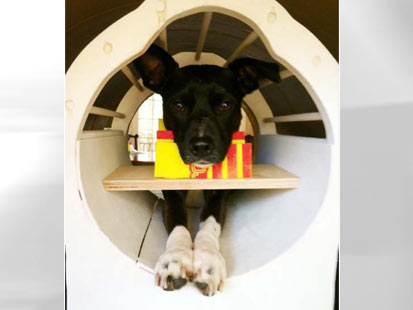Doggie MRIs: What Is Your Dog Thinking?

Image credit: Courtesy Greg Berns
Do you ever wonder what your dog is thinking, with his tail wagging, tongue out the side of his mouth? Does he really love you as much as you think?
Researchers at Emory University are one step closer to finding out. They are now conducting MRIs on dogs, looking for clues to what they're thinking.
"We don't really know what a dog is thinking because they can't talk," Greg Berns, professor of Neuroeconomics at Emory University, told ABC News. "So more often than not, we project our own feelings and thoughts on them as if they're coming from them, but they're not - they're coming from us."
Giving a dog a brain scan should not be that hard. But there was one problem: using anesthesia to sedate a dog alters its brain activity. They have to be fully conscious for an accurate scan.
Berns had a theory. If we can train dogs to skydive or rescue a drowning swimmer, why can't we teach them to sit still for 10 minutes to conduct a successful MRI?
So he began training his dog Callie, a two-year-old Feist, or southern squirrel-hunting dog, to crawl into an MRI machine and sit still long enough for an accurate scan of her brain.
Once she was properly trained, the team did a number of scans, with fascinating results - and insights into what Callie was thinking.
"The first task was to see if we give hand signals to the dogs, can we see what parts of the brain are responding to see hand signals?" Berns said.
The answer was yes.
During the tests, researchers showed Callie hand signals she had already learned - one that meant she would get a treat and one that meant she wouldn't.
When Callie was given the signal that she would get a treat, there was a clear difference in the scan in the area of the brain that processes feelings of reward.
"It proves they've transferred the meaning of the hand signal to something that's important to them," Berns said. "It's really getting at the start of how a dog processes dog-to-human communication."
And Berns said he thinks this new insight into what dogs are thinking will open many more doors in the future.
"I think this lets us see how the dogs are responding to us, and in a very practical sense, it's going to show us better ways to communicate with them, better ways to train that are not exclusively dependent on treats and punishment."